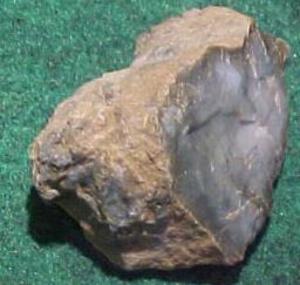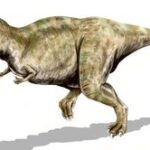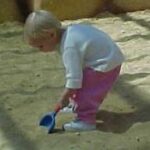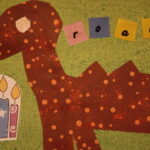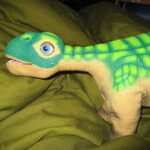When I used to teach elementary school children about dinosaurs, I would pass around a fossil and ask them what part of the dinosaur they thought it was. After some wild guesses, I would tell them it was a coprolite. When no one could identify it, I explained that it was dinosaur feces. Still no response, until I explained that it was fossil of dinosaur poop. There would always be a lot of ewws and ughs and even requests to go wash hands.
Ancient feces did sometimes become fossils, and scientists have named these fossils coprolites, literally “poop-stones.” Such feces fossils provide information about what ancient animals ate (and that tells us what plants and animals shared their environment). Dinosaurs are not the only prehistoric animals to leave us such fossils, but they are certainly the most interesting.
Coprolites are rare, compared to skeleton fossils, because soft material such as feces (or poop, in kid-speak) is not as likely to survive. Strangely, the first descriptions of coprolite, by William Buckland, are older than descriptions of dinosaur bone fossils. Although William Buckland drew his conclusions on the visual similarity of the fossils to modern feces, most coprolite looks very different. Sometimes, coprolites have been identified by the appearance of dung beetle tracks in the fossil.
The appearance of coprolites is as different as the animals that produced the original feces, showing differences in diet and environment. Coprolites appear in quite a variety of shapes, some of which make us wonder if dinosaurs suffered from hemorrhoids. Coprolites also come in quite a range of colors, which do not reflect the original colors of the poop, but instead, they indicate the mineral content of the material in which the fossils were preserved.
One of the trickiest facts to figure out about coprolites is which animal left the fossil for us. We can tell whether the dinosaur or other animal ate meat or plants, but unless a coprolite is found in the body of an animal, we cannot be sure of its source. Still, coprolites found near bones of a dinosaur might not be a product of that animal.
The size of a coprolite might suggest an association with a particular animal. A tyrannosaur would produce feces larger than one of the little birdlike dinosaurs. But, there are problems with drawing conclusions based on size. A small coprolite might be just a piece of a fossil broken from a larger poop stone. Large feces would have been likely to break down even before fossilization.
We know that some living animals produce small, dry feces (if you saw a single rabbit pill, could you correctly estimate the size of its creature of origin?), a small coprolite might have been the poop of a much larger animal. Little animals, of course, cannot produce large feces. So, size can at best allow us to figure out the smallest dinosaur that might have produced a coprolite
What is in the coprolite may help us figure out which dinosaur produced the feces. Bits of bone or shells suggest a meat-eater, but digestion would destroy much evidence, especially from plants. Some scientists believe that because of the levels of calcium in the feces of meat-eaters, there would be more coprolites from meat-eaters than from plant-eaters.
Although it is difficult to identify the species of the dinosaur that produced the original feces, looking at the whole picture of shape, size, and composition of the fossil can give us some clues. The more unusual the description of the coprolite, the more likely we are to be able to identify it.
Although it is appealing to think that any fossils, including coprolites, that we find are from dinosaurs, even if we can identify a coprolite as being from the Mesozoic period (the time of the dinosaurs), it is difficult to tell if the coprolite was feces from a dinosaur. Dinosaurs were not the only creatures leaving feces to be turned into coprolites at that time. Even more basically, it is sometimes difficult to distinguish fossilized feces from other fossils.
It may seem bizarre that scientists devote so much attention to coprolites, but careful study of fossilized feces can enhance our knowledge of what dinosaurs ate and how they interacted with their environment in ways that fossilized dinosaur bones cannot reveal.
So, when the coprolites hit the fan, we may not be in for the stink that my elementary school friends expected, but we can learn a lot about the dinosaurs and other animals that left us these fascinating feces.
